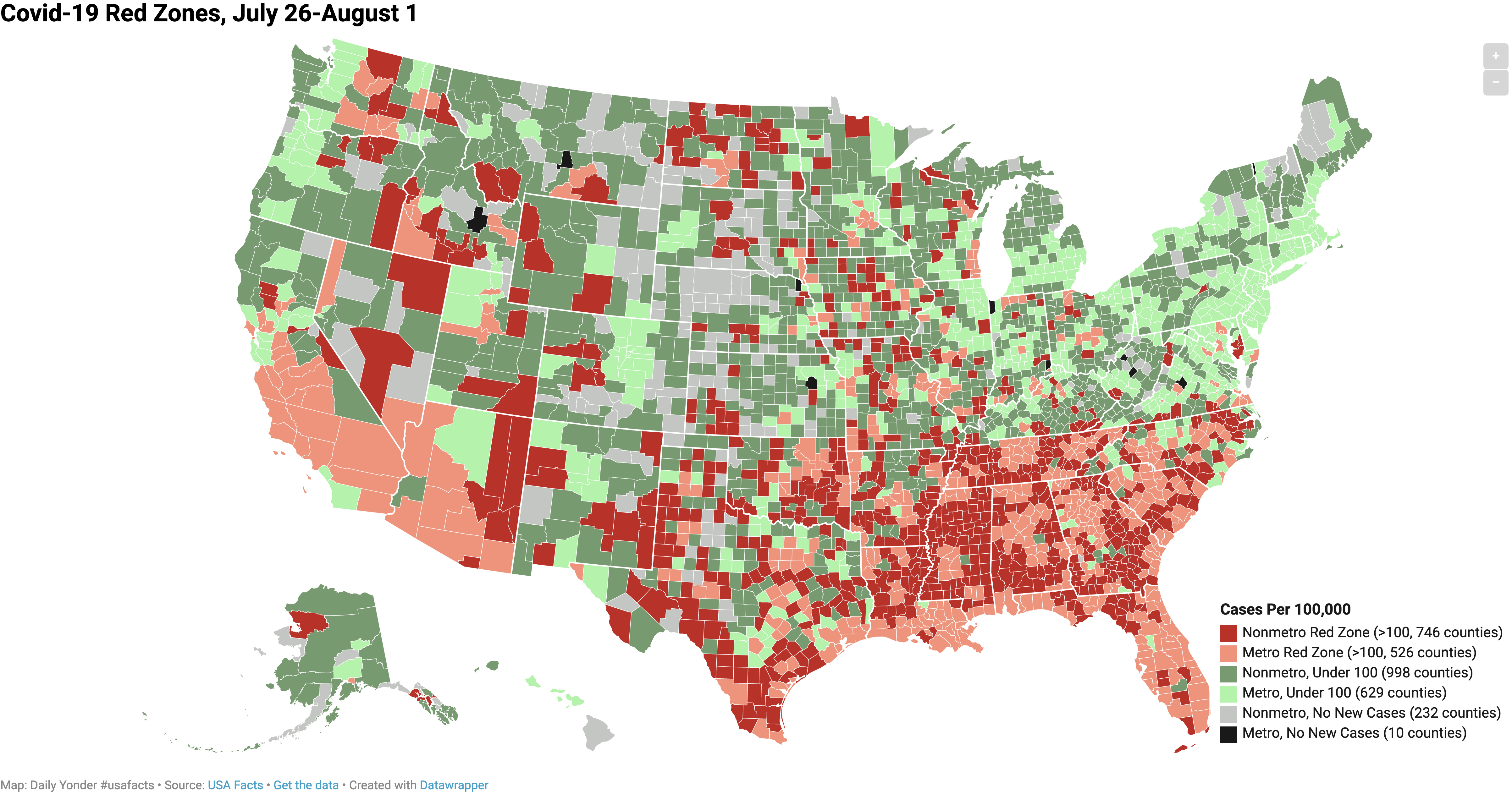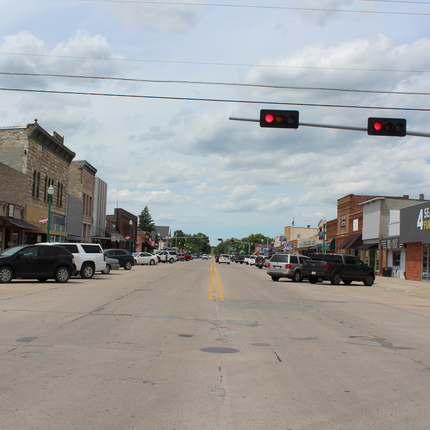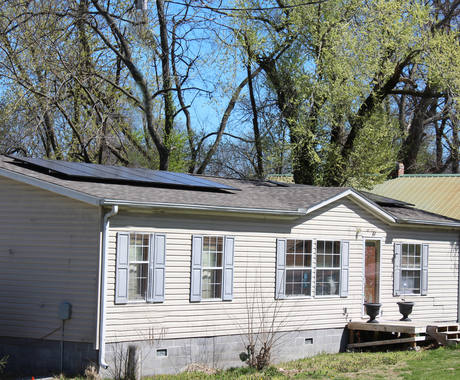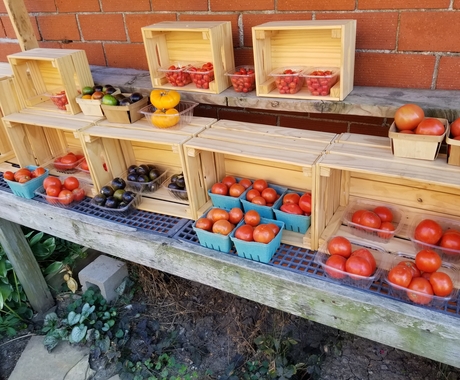Community responsibility is an often cited virtue in small towns. It is a value rooted in a commitment to neighbor and community. We witnessed it in barn raisings of past generations and in volunteer fire departments of today.
Rural people pull together for community, often across political differences. We pull together because something needs to get done. We pull together because we have to be able to count on each other in small towns.
Now, as we find ourselves in the throes of an extended pandemic, rural people can live up to the best of rural values by pulling together to take action for community.
The late-July surge in COVID-19 cases pushed farther into rural America than we saw earlier in the year. At the end of July, there were 746 so-called “red zone” counties across rural regions of the country. These are counties where the rate of new cases exceeds 100 per 100,000 residents during the prior week.

The map of counties experiencing significant COVID-19 spread is no longer isolated to the coasts or to major urban areas. The rural South is hit the hardest.
Even as we witness far-reaching community spread, much of the political narrative has centered on individual responsibility. No place is this more present than the debate over wearing a face covering. In our home state of Nebraska, the attorney general has even threatened to sue municipalities that require face coverings.
What if our political leaders called us instead to community responsibility? Absent the call from political leaders, community leaders can fill the gap.
The dichotomy over an open or shut economy is unhelpful. It has driven a wedge between people. The truth is more nuanced. If we implement risk-reducing behaviors, much of life can go on, even if it must adapt.
Epidemiologists tell us that if we all keep at least 6 feet distance and wear a face covering when we cannot, that these two steps alone will go a long way toward controlling the spread of COVID-19. This could be the difference between small businesses in our communities surviving or not. This could be the difference between schools being able to stay open or not.
If we reject risk-reducing behavior, we will be stuck right where we find ourselves for much longer.
Your community needs you to adapt. Keep at least 6 feet distance from others. Wear a mask when you cannot. Think of your community. Be safe.
Inset image credit: Daily Yonder




